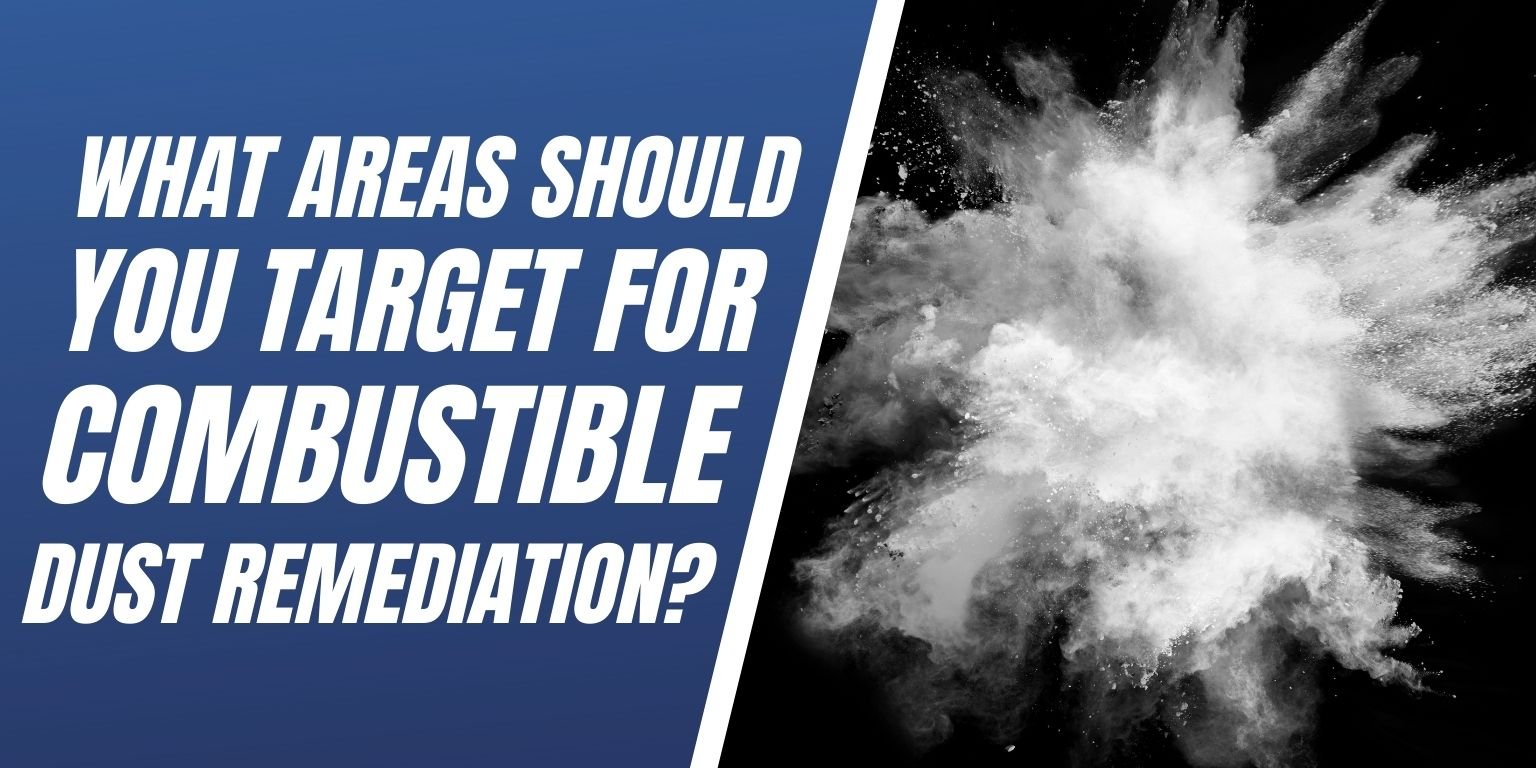
For a fire to burn it needs three elements present simultaneously: Fuel, Ignition, and Oxygen – also known as the “Fire Triangle”. But for a combustible dust explosion, two additional elements are needed to form what is known as the “Dust Explosion Pentagon”. These two elements are Confinement and Dispersion. They are created when the fuel, in this case combustible dust, is spread out as a dust cloud within a closed area, such as a factory or warehouse. Therefore, removing dust is the best way to prevent a combustible dust explosion!
Proper combustible dust cleaning is one of the most effective ways to prevent a dust explosion. By taking away the fuel from the dust explosion pentagon it removes the risk of an explosion, and also removes the possibility for a fire. The NFPA combustible dust standards outline the best methods for cleaning this dust, which should only be done by a trained professional.
Where to Target for Combustible Dust Remediation
Some of the combustible dust remediation services target these specific areas to clean:
- High ceilings and surfaces
- Heating, ventilation and air conditioning (HVAC) systems
- Dust collectors
- Conveyor belts
- Silo tanks
- Lab fume hoods
Targeting these areas can help prevent airborne dust and particles from accumulating in the manufacturing and production facilities.
Combustible dust remediation may also help promote longevity of manufacturing equipment, decrease utility costs, and increase the brightness of lighting.
Combustible dust cleaning should be performed ONLY by a certified and trained by standards set by the NFPA, NADCA, and OSHA. The certified combustible dust remediation contractor should have the proper industrial and commercial cleaning equipment, like intrinsically safe vacuums and grounded hoses.
Preventing Dust Explosions
Unfortunately, combustible dust remediation is regularly not a part of an industrial facility’s cleaning plan, because not enough people realize that the dust created from manufacturing can become an explosion hazard. In fact, the first time many people learn about the risk is as they are being handed a citation by an OSHA inspector, or worse, after an explosion has already occurred.
As an industrial facility, you produce a lot of dust and, after a while, that dust begins to accumulate on the surfaces of machinery, rafters and ceiling, ductwork, and even on the floor. When the dust is disrupted from air movement in the building, exhaust from machinery, using compressed air, or even from smaller fires or explosions nearby it disperses into a dust cloud. Since the dust cloud is contained by the walls of the building it is a fuel source. This poses a danger because an ignition source created (usually from heat, or sparks) within reach of the cloud can cause an explosion.
Hughes Environmental performs combustible dust remediation in a wide array of facilities throughout the United States and deals with many types of combustible dust.
Contact Us Here or call 888-845-3952 today to schedule your combustible dust cleaning to help prevent a dust explosion hazard in your facility.

